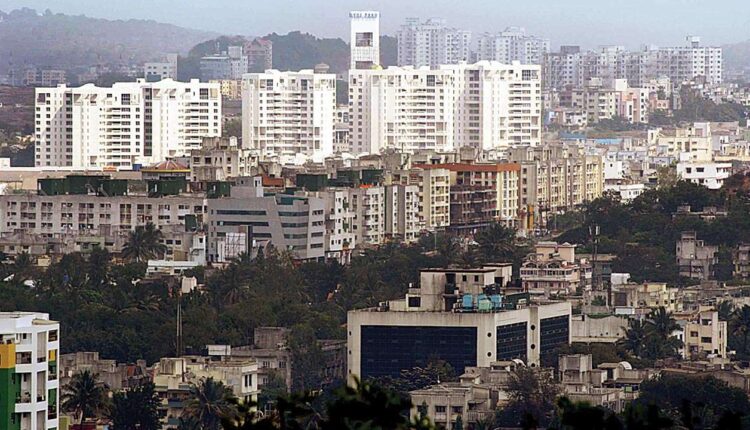Popularly known as the seat of the Peshwas, Pune is dotted with forts that stand today as testament to the Marathas’ past glory. You will find here forgotten architecture and broken buildings as vestiges of a past that goes back to the settlements near the Mula-Mutha river from the period of Rashtrakootas and Yadavas.
Some of its temples have stood the test of time, to carry the tales of the past glory on their reliefs. Let us have a look at five temples you can visit to experience a slice of history.
Pataleshwar
Situated on the busy JM Road, Pataleshwar is a temple you are most likely to miss if you are not aware of it. With a path leading the visitors down to the temple, Pataleshwar literally translates to patal (abyss/inferno) and ishwar (god). Pataleshwar, according to an article in punetourism.co.in, is devoted to Lord Pataleshwar, the god of the underworld, that is Shiva. It is one of the few temples carved from a single rock. It houses a shivalinga and an ornate nandimandap with an imposing nandi (bull).
Marble statues of Goddess Sita, Lord Ram, Lord Lakshman are believed to have been installed in a later period. The temple also has statues of Lord Ganesha and Goddess Lakshmi. It is maintained by the Archaeological Survey of India.
Location: JM Road
Distance from the Pune railway station: 3.4 km by vehicle
Trishund Ganpati Temple
According to an article in The Indian Express, the Trishund Ganpati Temple at Somwar Peth near the Kamla Nehru Hospital was built between 1754 and 1770. During the Peshwa period, the norm was to build a temple near the burial place of an ascetic. Somwar Peth was a cremation ground then. It is believed that there is a samadhi (tomb) of an ascetic underneath the temple’s main sanctum. The temple was built using typical Deccan basalt.
The main idol of Ganesha is also made of pure black basalt stone and is believed to have been installed by ascetics of the Shaakta sect. The idol has three trunks and six hands and is sitting on a peacock. The outer walls of the temple have several stone carvings, one of which shows a British soldier tying a rhinoceros with iron chains, as per the article. This carving was an artist’s depiction of the Battle of Plassey in 1757, where the British forces won over Bengal and Assam. Idols of Natraja, Vishnu and Kaala Bhairava can also be seen carved on the walls.
Location: Somwar Peth
Distance from the Pune railway station: 2.6 km by vehicle
Shri Kasba Ganpati Mandir
The Kasba Ganpati is the presiding deity of Pune and this status was accorded to the temple by Lokmanya Tilak. According to the website kasbaganpati.org, the temple was set up in 1630 AD after an idol of Lord Ganesha was found near the house of Vinayak Thakar, who used to reside close to the residence of the queen, Jijabai Bhosale. A young Shivaji, at the age of 12, vowed to liberate the mavals who were suffering under Mughal rule.
After finding the idol, Jijabai perceived this as an auspicious moment and promptly built a temple, which is known as the famous Shri Kasba Ganpati Mandir. Shivaji started building the empire of ‘Swarajya’ after this auspicious moment.
Location: Kasba Peth
Distance from the Pune railway station: 3.2 km by vehicle
Mrutyunjeshwar temple
According to indiamapped.com, there is no proper evidence about the history and construction of the temple. It is believed that the construction was completed during the Peshwa rule in the 17th century. The temple is also famous for its Maharashtrian-style architecture, according to the website. This temple is considered among the most visited Shiva temples in the state.
Location: Kothrud
Distance from the Pune railway station: 7.8 km by vehicle
Nageshwar temple
According to the Pune Municipal Corporation website, the Nageshwar Temple is a 700-year-old temple registered under the Archaeological Survey of India. This temple has been preserved in its original form and glory. Its history dates back to the time of Saint Dnyaneshwar and Tukaram. Legend has it that there was a nearby lake with magical properties to cure leprosy. The structure of the main nave, which has a stone roof, is from the Yadav period. One of the most important events this temple witnessed was the construction of a meeting hall during the Peshwa period.
The temple has a grand entrance, a main shrine, smaller shrines around and two lamp posts. On its walls are small concave depressions with shrines; idols of gods are placed in them. On the temple premises (as well as in the assembly hall), there is an idol of nandi and a small shivlinga. There are idols of other gods and goddesses such as Shani Maharaj and Ganapati.
There are small temples of Lord Vitthal, Lord Vishnu, Lord Hanuman and Lord Dattatreya on its premises. The Archaeological Survey of India has declared this temple as a heritage site. Many have settled on the temple premises now, which is located in the densely populated part of the city.
Location: Somwar Peth
Distance from the Pune railway station: 2.3 km by vehicle


